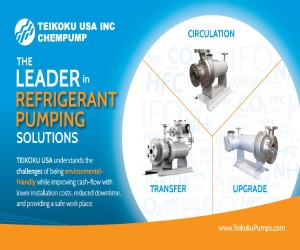Hawaii and Energy Efficiency

Because heat pumps ‘move’ heat from a low temperature heat source to a high temperature level with a relatively small power input, they can produce the same heating effect as a boiler burning fossil fuel or electricity with only 1/3 to ¼ the energy input. Heat pumps use the same basic technology and components found in any refrigeration system; compressor, condenser, expansion device, and evaporator. As a refrigeration engineer this is a technology that is easy to get excited about!
To date our activities in IIAR have focused primarily on refrigeration – making stuff cold. As we start to add more focus and emphasis on energy efficiency and sustainability issues through our newly formed committee of the same name, I believe the promotion of heat pumps for water and air heating will be the result. In many facilities that depend on refrigeration, i.e. food processing plants, breweries, etc., the heating loads are actually larger than the refrigeration load. Commercially available ammonia heat pumps can achieve heating temperatures greater than 90 deg C (194 deg C), while other work on the development of ammonia / butane cascade heat pumps have demonstrated the feasibility of reaching heating temperatures as high as 125 deg C (257 deg F)! These temperatures are high enough to replace boilers in most (if not all) of our food processing facilities.
Another interesting type of heat pump is often referred to as a mechanical dehumidifier. In the same facilities that require both refrigeration and heating, many times there are also dehumidification challenges (controlling condensation, drying processes, etc.) that could be met using a mechanical dehumidifier. A mechanical dehumidifier places the evaporator coil in series with the condenser coil to first cool and dehumidify an airstream and then reheat it to a lower humidity level. The further addition of a wrap-around heat pipe with the cooling coil can reduce the compressor horsepower in many cases by half. Dehumidifying air in this way uses a fraction of the energy compared to desiccant dehumidifying which requires a large amount of natural gas or electric resistance heating to regenerate the desiccant media. Here is another technology that all of us as refrigeration engineers can easily grasp.
Electric power generation and heating activities contribute 25% of global greenhouse gas emissions as shown in the above figure published by the US EPA. In my view this represents both an obligation and an opportunity for all of us to apply what we know and do to improving the energy efficiency of our refrigeration systems and to expand our activities to include the application of heat pumps and mechanical dehumidification, thereby reducing greenhouse gas emissions. It is personally gratifying to see the interest and enthusiasm shown in the formation of our new Energy and Sustainability Committee and I want to thank all of those involved in its formation: Mike Lynch, Stefan Jensen, Pat Strine, and the IIAR Board of Directors.
In closing I encourage you to get involved in IIAR committee activities. I am certain it will place you in the forefront of the important work we share of making our world a better and safer place.












